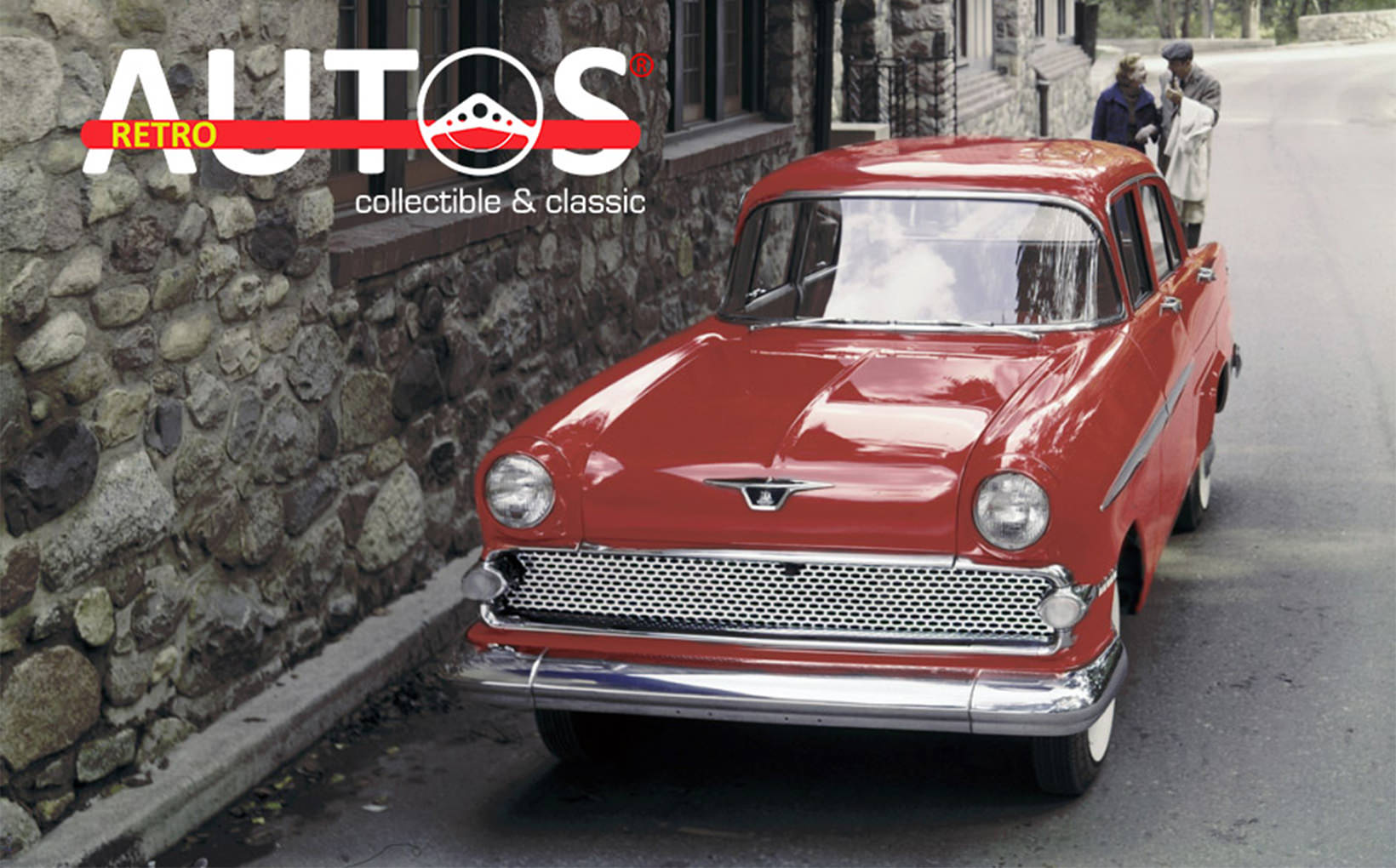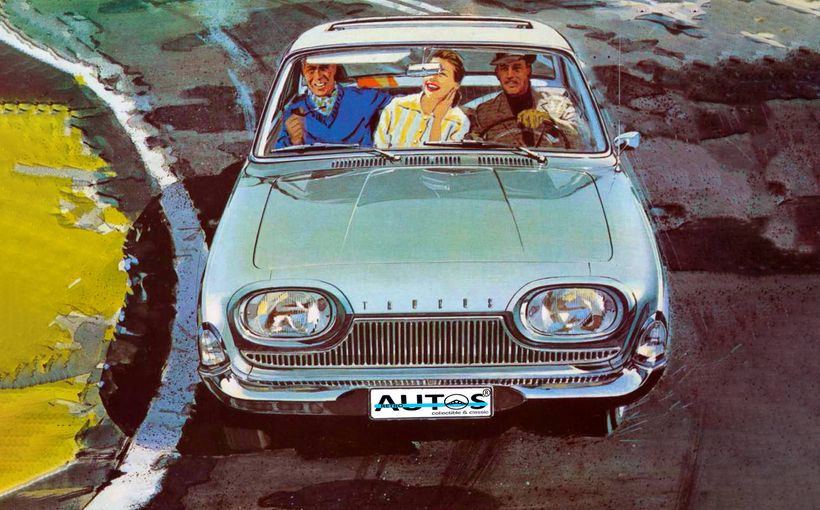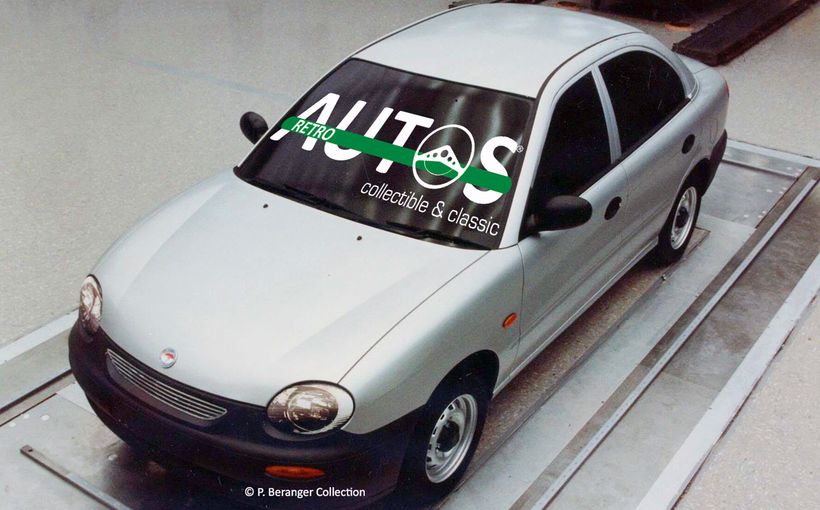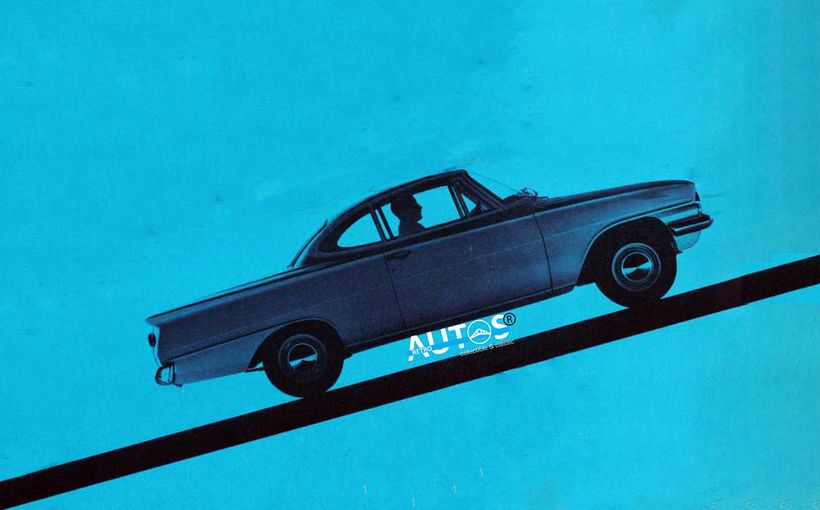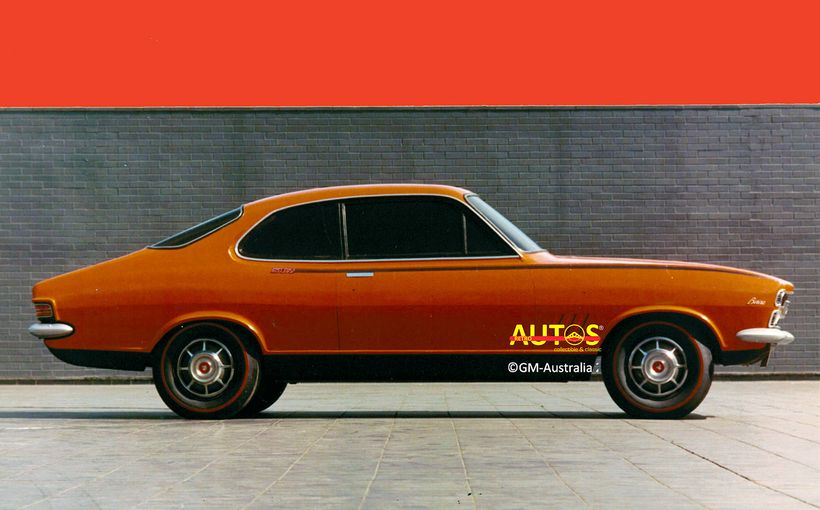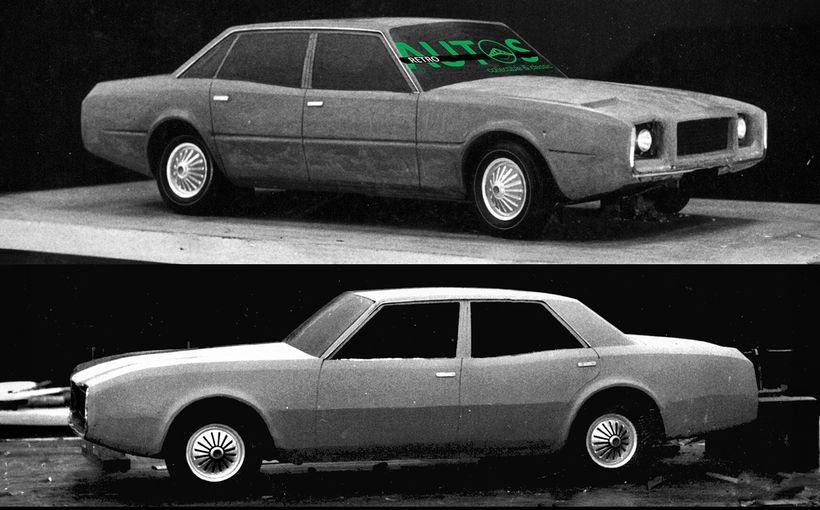
If Henry Ford’s Model T and Volkswagen’s Beetle are considered the first examples of “world” cars from their makers, then I’m nominating the 1957-62 Vauxhall Victor as General Motors’ (GM) first to be purposefully designed for sale around the world.
“You’re kidding,” I hear you say? “The Victor?”
Yes, the Victor. Please hear me out on this. I’m positive I’ll convince you.
Actually, when you think about it, neither the Model T nor the VW Beetle were originally created as “world” cars. They became “cars of the world” because of their simple engineering and robust construction. Throw in a cheap price and go-anywhere convenience meant they appealed to buyers far beyond their homeland starting points.
The Victor’s origins are quite different. For here was a car that began its development with a global market as part of its product planning brief.

The 1957 Victor’s origins can be traced back to a product planning meeting in January 1954, in New York, at General Motors Overseas Operations headquarters, located at 1775 Broadway, right on Central Park.
How do I know this? Well, David Booker, the creator and curator of the world’s best Vauxhall website, Vauxpedia, says so. And if that’s what David says, then it must be right.
Vauxhall’s design boss, David Jones, and chief engineer, Maurice Platt, were at this New York meeting. It was agreed that the company’s range would be split into separate four and six cylinder models with differing body sizes.
Since 1948 Vauxhall had offered only one body style and size, with two engines: the four cylinder Wyvern and the six cylinder Velox and Cresta. Vauxhall’s product planners could see that a gap in the market was opening for a small/medium sized car that would slot in between the large Velox/Cresta and Ford Zephyr/Zodiac and the small Austin A35, Morris Minor and Ford Prefect/Anglia. It was a perceptive insight and one that Ford would not fill until the Cortina’s arrival in 1962.




The small-medium four cylinder car was given the code “F”, with a planned release in late 1957. The large six cylinder car, coded “P”, scheduled for early 1958, would replace the current “E” series
To build the F-car, a new factory was commissioned and construction commenced. The construction schedule was linked to the car’s release date. And you can already guess that this part of the story is not about to end well.
As a starting point, the F-car’s overall package dimensions were based on the 1953 Opel Rekord. The wheelbase was set at 98 inch/2489mm. By comparison, the Austin A35 sat on a 79.5 inch/2019 mm wheel base and the Morris Minor’s was 86 inches/2184mm.

By September 1954 Jones and his team had two clay prototypes ready for review. David Booker explains that one was quite conventional in style while the other displayed GM’s latest wrap around windscreen, tail fins and deep side contours.
A review of the proposals was attended by GM’s newly appointed President, Harlow “Red” Curtis. “His decision was a foregone conclusion,” notes David. The proposal with the wrap around windscreen was chosen. Curtis believed that “Vauxhall had a wonderful opportunity to lead Europe in producing the car with the panoramic windshield and our competitors would be forced to follow.”
Curtis then added more complexity to the project. He was keen to shorten development lead times right across GM’s empire, and saw an opportunity with Vauxhall. He decided that the F-car would be sent to the US for final design development and engineering testing. The larger “PA” model, as it was now called, would be developed at Vauxhall. He reasoned that this split would accelerate development of the cars and allow earlier release dates.
What he did not factor into the equation was how to manage the project across two continents, the communication issues that would inevitably occur and the cultural differences in approach to styling. David Jones sought restraint, while Harley Earl’s team worshiped at the Church of Chrome.
The first evidence of problems arose when the Victor clay model was damaged in transit between the UK and the USA. The US styling team repaired it and unbeknown to Jones, they decided to make some “improvements”. These alterations included more chrome, “dagmar” bumpers and deep contours and bulges along the sides. When Jones flew to Detroit to review progress, he immediately ordered changes, which muted the American excesses. He could not do much. Time was running out due to the shortened development schedule.


The outcome was a car that looked somewhat contrived. It resembled a shrunken 1957 Buick, with a bit of ’55 Chevrolet grafted onto the rear doors.
The Victor was not the only GM small/medium sized car to be given an American make over. The 1957 Opel Rekord was similar in shape and was known in Germany as the “peasants’ Buick”.
The Victor broke with a styling tradition which had featured on Vauxhalls since 1905. Gone were the two chrome flutes along the bonnet. Just two little chrome strips running in parallel were all that remained.


The engineering program of the Victor ensured it was developed for right and left hand drive markets. David Booker notes that eight prototype test cars were built by Fisher Body in the USA by late 1955.
Three of the prototypes remained for “extensive” testing at GM Milford Proving Grounds. Five were sent to the UK. Four were used for testing in the UK and Europe. One went to the Styling department for conversion into a station wagon, which would be part of the range.
With the durability testing program split between the USA and the UK, delays in rectifying problems arose. Plus, the USA’s testing regime was not particularly focused on the type of rough conditions that the Victor would meet in many countries around the world.
Ford Australia would have a similar experience when it trusted the major part of durability testing of the XK Falcon to Ford in the USA.
A major problem with the Victor was water and dust entry which led to corrosion. This would plague the car in its early years. It was evident during testing but could not be fixed in time for the launch, which Curtis had now brought forward to February, 1957. The precious time to fix known issues was lost.
Adding to the situation, the new factory was not finished when the car debuted. It came online in August 1957, the original month planned for the Victor’s release.


The styling attracted plenty of comment in the UK. It was either like it or not. It certainly stood out among all of the conservatively styled BMC and Ford automobiles. Car buyers must have seen something they liked because initial sales were brisk. Eighty thousand were built in the first 12 months, a better than expected result. It was the UK’s number one exported car.
Canadians first saw the Victor, in Pontiac dealerships, in April 1957. Americans were able to buy it from September, also though Pontiac dealers
Americans bought 20,000 of them in its first year, but the price was a stumbling block. Seen as a very small car in the USA, it was priced similarly to the lowest priced full-sized Chevrolet. In terms of sheet-metal-for-money, it was not competitive value. The Victor disappeared from Pontiac forecourts when the Pontiac Tempest was released in late 1961.

Holden dealers were all smiles when the new Victor was rolled off the back of the car carriers and onto their showroom floors in September 1957. Finally, they had a car which gave them access to the small car market and, as affluence grew, the second car segment. They could compete against the VW Beetle, Rootes company’s Hillman Minx, BMC’s contingent of small cars and Ford’s Anglia.
The local motoring media, mostly newspaper writers, were enthusiastic after initial road impressions were conducted. In the January, 1958 edition of Modern Motor, however, a glimmer of doubt had crept into Brian Hanrahan’s assessment. He summarised that it was a “sound snappy small family car that promises to last longer than most. But finish disappoints at the price”. Hanrahan mentioned thin paint, body welding overruns and upholstery which had started to wrinkle and a hand brake which “combined the rapidity of a rat trap and all the effect of a blow torch on an iceberg.”


It is no secret that the Victor suffered from many deficiencies most of which surrounded the early production build quality and body design, all due to its shortened development time.
David Booker comments that it was not unknown for brand new Victors in dealer showrooms to show the early signs of body corrosion and after as little as two years on British roads some would already have holes in the mudguards and sill panels.
Criticism of the styling led David Jones and his team to quickly revise the shape into a Series 2 model, planned for a 1959 launch.
In many ways the Series 2 was closer to what Jones had originally intended for the Series 1 Victor.
The garish trim excesses were removed. The grille was simplified and widened. The side bulges and roof were flattened. The bumper bars were simplified. No front and rear “dagmars”.
The Series 1 Victor had sold well enough in Canada for Chevrolet dealers to demand their own version. With the Series 2 model, Vauxhall obliged them with a restyled version, the Envoy.


Early design sketches of the Envoy, found by GM Heritage’s archivist John Kyros, reveal that Don Lasky, who worked with Leo Pruneau on the HD Holden, penned many of the ideas which were translated into production. Indy Car, Corvette and Mustang designer, Larry Shinoda, also contributed sketches to the re-design. You can see these on David Booker’s Vauxpedia website.
The Series 2 underwent a minor facelift in 1960. The main talking points for dealership sales staff were a new five-bar grille, an 18% larger rear window, revised instrument panel with additional padding, strip-style speedometer and relocated controls.

It is one of these late series Victors which has found its way into Jeff Haslers’ garage. Why Jeff bought his 1961 Victor is a common story in the classic car community.
“It was my first car and I bought it in 1972, for $130, in Queanbeyan. It was blue and white. I went for my license in that car. I kept it for a short period and, of course, it wasn’t fast enough for a 17 year old,” says Jeff.
“It was a very good car and in excellent condition. But I had some problems with the linkage to the gearbox, so I decided to sell it. Mind you, it shouldn’t have been enough reason to sell it. Hindsight does bring wisdom,” he admits.


“In 2018 I started to think how nice it would be to try and find an old Victor to have as a project. As it turned out my wife’s cousin was a member of the Cooma Historic Car Club and on one of their show days, I spotted the car I have now. As soon as I found out it had travelled only 28,000 miles, I was hooked. So, after a bit of negotiation I bought the car for a bit more than I paid for my first one,” he says.
A check of its history revealed the Victor had been purchased new from Boyded Holden in Sydney in 1961 by the quintessential little old lady. She also ordered a number of extras including white wall tyres, front door weather shield, external sun visor and mud flaps.
For Jeff the car is the ideal first classic. “All I have to do is jump in and turn the key,” he says. “This car doesn’t go as fast as the one I had in 1972 but that may have something to do with the age difference.”


The Series 1 and Series 2 Victor achieved 390,000 sales across the world during its four years on the market. That’s not as many as Vauxhall would have liked, but considering it used the same basic tooling, Vauxhall made money from the car.
It was replaced in 1962 by the larger FB Victor range, which was featured in the January 2018 edition of Retroautos. Here’s the LINK.
So, do you think the Victor qualifies as a world car, and GM’s first?
With sales in the UK, Europe (including Italy and Sweden), the USA, Canada, Mexico, Australia, New Zealand, South Africa, Sri Lanka, India, Pakistan, Malaysia, Thailand and Singapore I believe the answer is yes.
Did GM capitalise on this valuable opportunity? The answer is no. They let it slip away and incentivised their divisions to develop very different cars focused on specific countries/regions. The upside is that Australia was blessed with iconic cars such as the Kingswood, Monaro, Statesman and Torana.
The downside was that it spread financial, technical and people resources across many development programs, reducing GM’s focus on projects which had global application. It also opened to door to “world” cars, such as the Toyota Corolla, which benefitted from the co-operative concentration of resources.
Had GM thought things through, the logical car to leverage the Victor’s establishment of a global market presence ought to have been the 1963 Opel Kadett/1964 Viva. They were largely the same cars under the sheet metal. Another opportunity missed was the 1967 Vauxhall Viva/Holden Torana.


GM took until 1973 to get their act together. It was called it the T-car, the Gemini here. In the meantime, Mazda, Toyota and Nissan had pushed ahead with global cars. Honda, Mitsubishi, BMW and Mercedes were not far behind. The future of the automotive industry was clear to see.
Retroautos is written and published with passion and pride by David Burrell.



